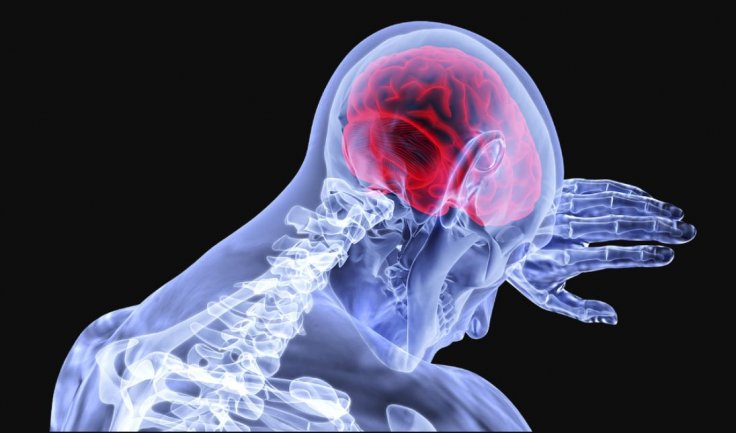When it comes to the diagnosis of a stroke, time is money. With every passing second, the damage caused to the neurons only compounds. A new study, however, reports the development of a new Artificial Intelligence (AI)-based tool that requires only a smartphone for the identification of a stroke within a matter of minutes.
Researchers from Houston Methodist Hospital and Penn State University have developed a tool that leverages AI/Machine Learning (ML) to diagnose a stroke by analyzing the abnormalities in a patient's muscular movements and speech ability, with the precision of an emergency room physician.
"Currently, physicians have to use their past training and experience to determine at what stage a patient should be sent for a CT scan. We are trying to simulate or emulate this process by using our machine learning approach," said Dr. James Wang, corresponding author of the study, in a statement.

Limitations Faced By Doctors During Diagnosis
According to the World Health Organization, strokes are the third leading cause of disability and the second leading cause of death worldwide. Simply put, stroke is the damage to the brain due to the interruption of blood supply to it. The obstruction could be on account of a rupture or a blockage in an artery that carries blood to the brain. The most common symptoms of a stroke are trouble in speaking and walking, and cognition, along with numbness of the face and limbs, and paralysis.
Dr. John Volpi, co-author of the study, said that clinicians currently resort to the use of a binary approach towards the diagnosis of strokes. One scenario is that they do not suspect a stroke, which leads them to potentially overlook the need for additional assessment. The second is that they suspect a stroke and make patients undergo a series of scans that could potentially lead to the exposure of radiation.
"When a patient experiences symptoms of a stroke, every minute counts. But when it comes to diagnosing a stroke, emergency room physicians have limited options: send the patient for often expensive and time-consuming radioactivity-based scans or call a neurologist -- a specialist who may not be immediately available -- to perform clinical diagnostic tests," added Dr. Wang.
Using Data From Real Patients

The novel approach employed by the team is the first to examine the occurrence of stroke in emergency room patients suspected to have a stroke by utilizing computational facial motion analysis and natural language processing to detect irregularities in a patient's voice or face, such as slurring of speech or drooping of the cheek.
In order to train the computer model, a dataset from over 80 patients experiencing stroke symptoms at Houston Methodist Hospital in Texas, was built by the authors. Each of these patients was asked to undergo a test for the analysis of their speech and cognitive-communication while it was being recorded using an Apple iPhone
"The acquisition of facial data in natural settings makes our work robust and useful for real-world clinical use, and ultimately empowers our method for remote diagnosis of stroke and self-assessment," said Dr. Sharon Huang, associate professor of information sciences and technology at Penn State.
Accuracy of Emergency Room Doctors

When the model based on the Houston Methodist dataset was tested, the team found that it achieved a 79 percent accuracy—which is more or less the same as the diagnosis made by emergency room doctors, who rely on additional tests such as CT scans. Nevertheless, the model can help conserve crucial time in the diagnosis of a stroke, with the capacity to assess a patient's condition in around four minutes.
Talking about the importance of quick diagnosis of strokes, Dr. Stephen T.C. Wong, co-author of the paper, said, "The earlier you can identify a stroke, the better options (we have) for the patients. That's what makes an early diagnosis essential."
Potential to Mitigate Damage and Provide Swift Treatment
The findings of the study may potentially help emergency room physicians to diagnose and most importantly decide on the vital next course of action that the patient's condition demands. Additionally, caregivers or patients themselves can utilize the tool to assess their state of health before arriving at a hospital. Thereby, time—which is the most crucial and precious element in the diagnosis and treatment of a stroke—can be saved.

"There are millions of neurons dying every minute during a stroke. In severe strokes, it is obvious to our providers from the moment the patient enters the emergency department, but studies suggest that in the majority of strokes, which have mild to moderate symptoms, that a diagnosis can be delayed by hours and by then a patient may not be eligible for the best possible treatments," highlighted Dr. Volpi.
Volpi also opined that despite the presence of cutting-edge therapeutics, medication, and procedures for strokes, the diagnostic aspect is rather "primitive" and "inaccurate". He added, "If we can improve diagnostics at the front end, then we can better expose the right patients to the right risks and not miss patients who would potentially benefit."








